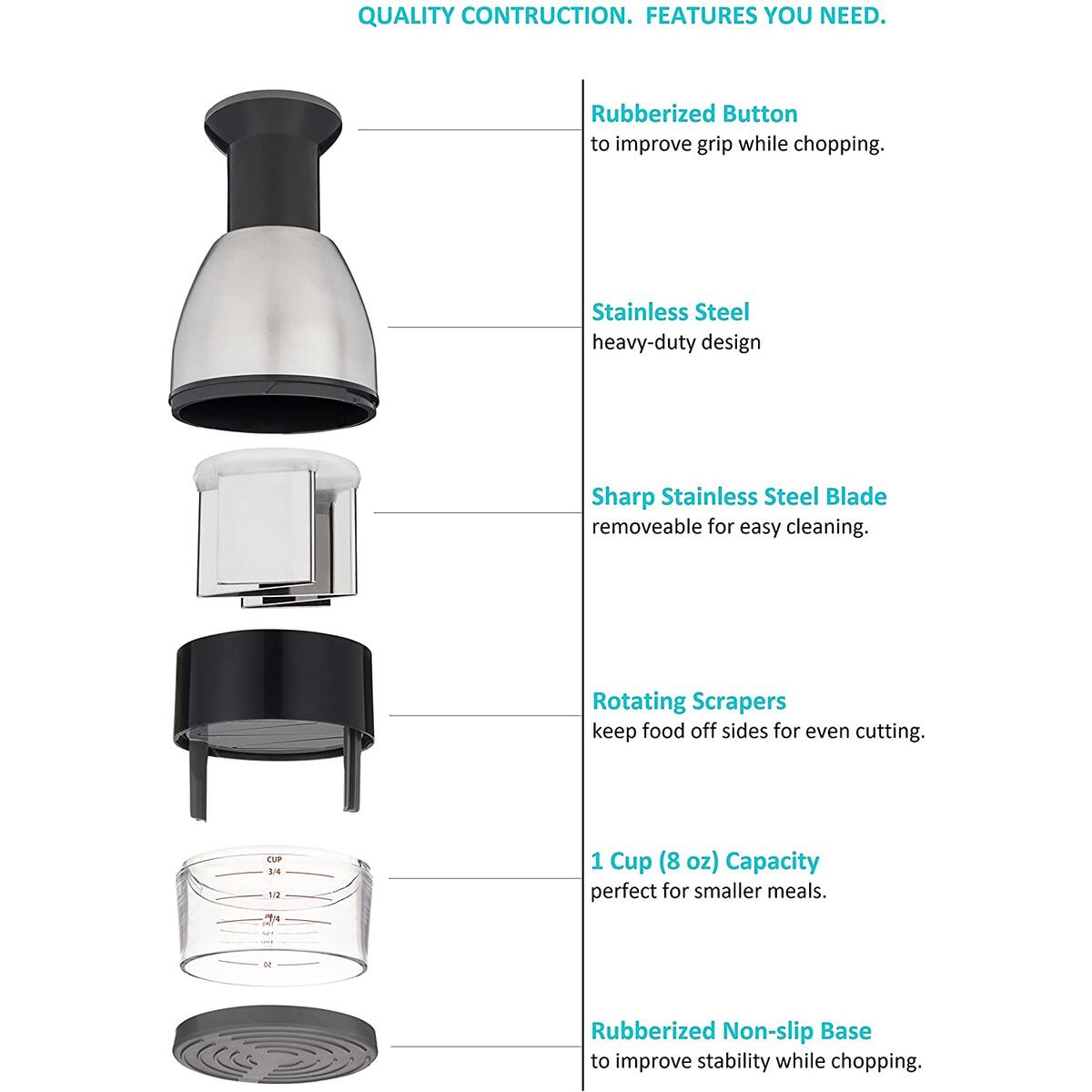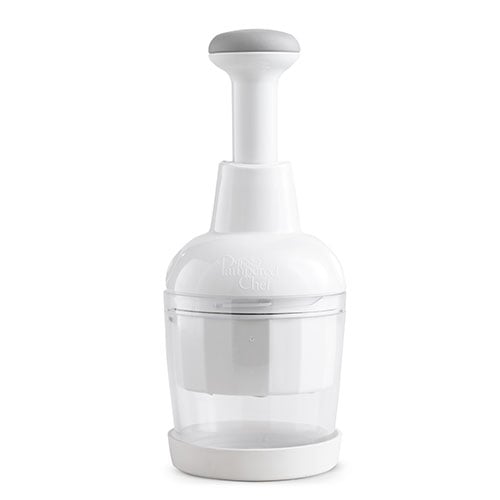

On the other hand, cooks who want a vegetable chopper only for basic functions like cutting or chopping don’t need a super-powerful model. High-use needs, chopping tough ingredients like root vegetables, and kneading dough can burn out a motor or alter the consistency of the ingredients. Before deciding how powerful a vegetable chopper you think you need, consider what you intend to use it for. Mini versions might use a mere 70 watts, and larger electric choppers and food processors might require up to 1,200 watts to operate. Motor power in vegetable choppers varies significantly depending on the machine’s functionality. PowerĮlectric choppers require electricity to operate.
Vivaant food chopper manual#
Electric choppers are small food processors, so they tend to be larger than manual devices and therefore have a larger storage capacity.

Electric choppers’ rotating blades result in less uniform results than vegetables cut by manual choppers, but they are typically multifunction tools that can chop, dice, grate, knead, and/or blend.

For safety, ingredients are added at the top of the machine far away from the blades. With the touch of a button, electric vegetable choppers use power to spin the tool’s blades. Their catch trays typically store 1 to 4 cups, and they may need to be emptied frequently. The simplest manual choppers have just one blade that may not be detachable. These choppers are no-fuss devices that are less expensive and quieter than electric options, but they may come with fewer bells and whistles-they may not be able to purée, for example.
Vivaant food chopper portable#
As it doesn’t require a power source, it’s portable and appropriate for camping and other electricity-free activities. Manual vegetable choppers cut by pulling, rotating, or pushing a handle that forces produce through the cutting blades. With care, it may last longer than plastic, but it is breakable and requires care during use. It can be heated without warping, and it always looks new.


 0 kommentar(er)
0 kommentar(er)
